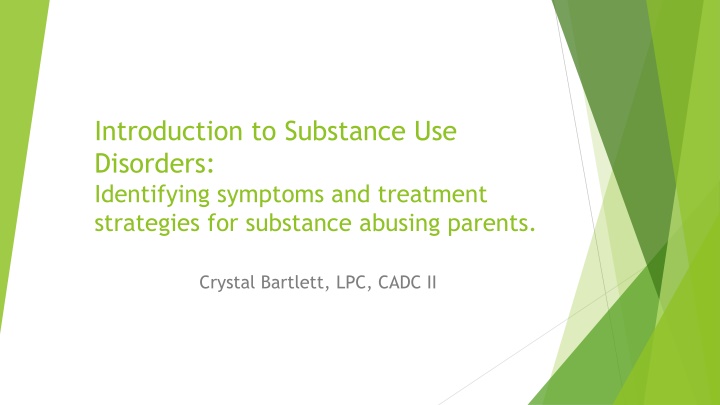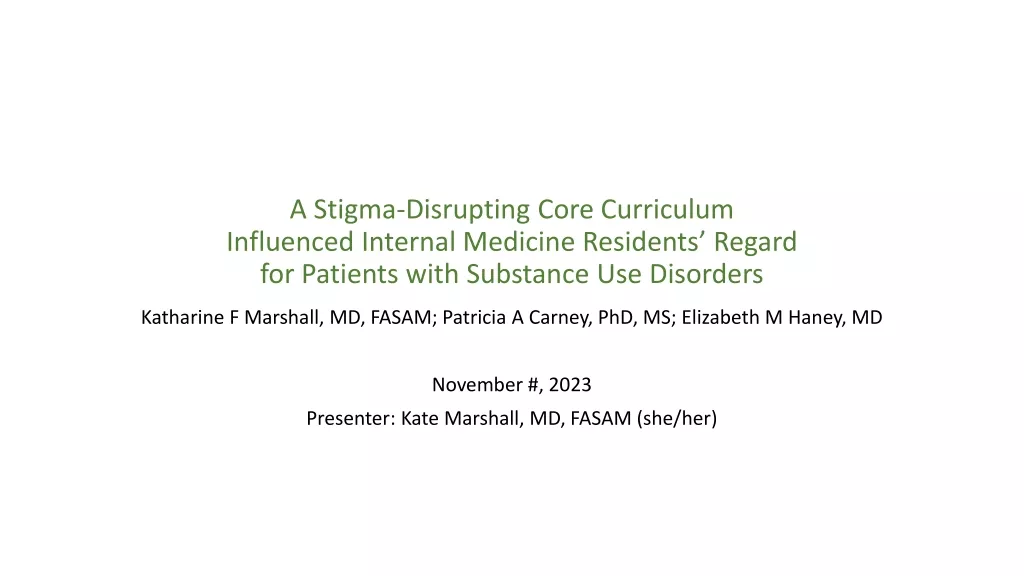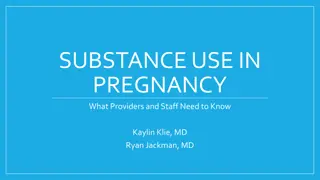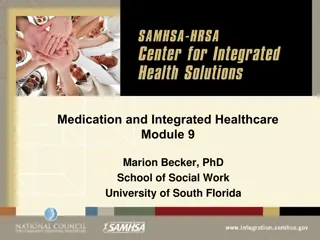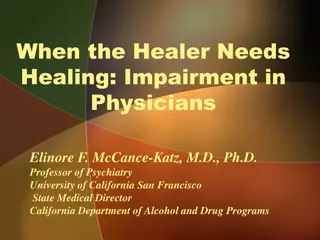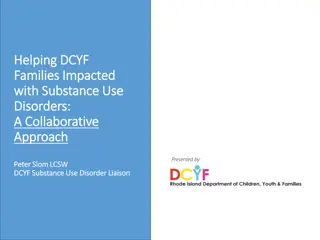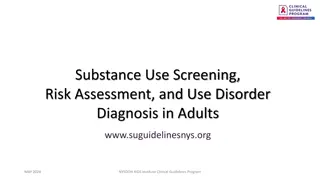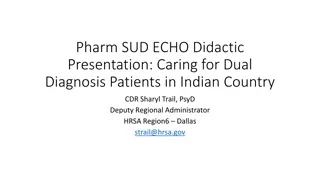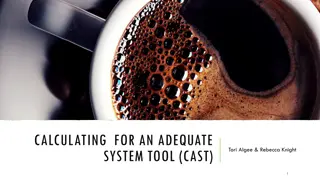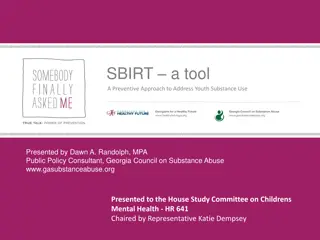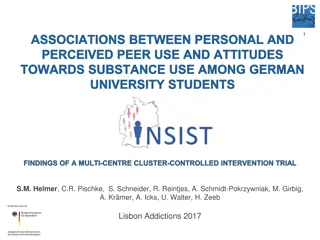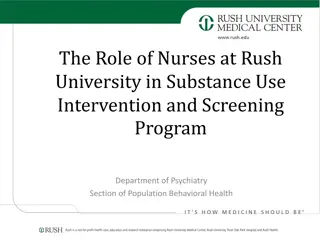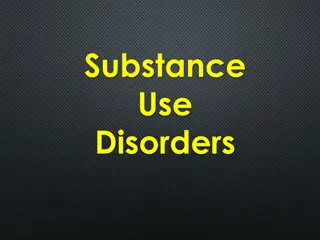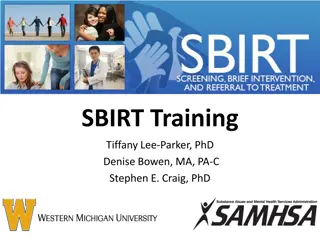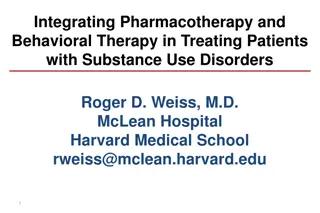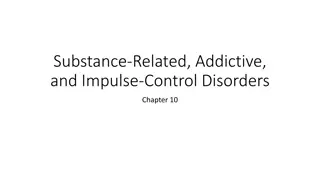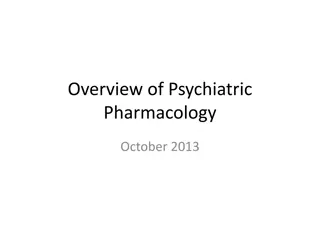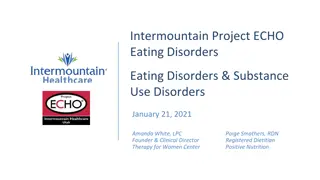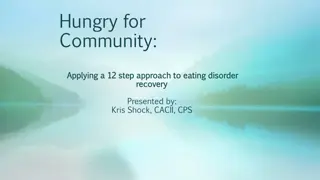Introduction to Substance Use Disorders:
In this comprehensive guide, Crystal Bartlett, LPC, CADC II, delves into identifying symptoms and treatment strategies for parents struggling with substance use disorders. Explore DSM-5 criteria, ASAM guidelines, and dimensions for assessing readiness to change and living environment factors. Gain insights into managing withdrawal, biomedical conditions, emotional and cognitive complications, parenting stress, and more in substance abusing parents.
Download Presentation

Please find below an Image/Link to download the presentation.
The content on the website is provided AS IS for your information and personal use only. It may not be sold, licensed, or shared on other websites without obtaining consent from the author.If you encounter any issues during the download, it is possible that the publisher has removed the file from their server.
You are allowed to download the files provided on this website for personal or commercial use, subject to the condition that they are used lawfully. All files are the property of their respective owners.
The content on the website is provided AS IS for your information and personal use only. It may not be sold, licensed, or shared on other websites without obtaining consent from the author.
E N D
Presentation Transcript
Introduction to Substance Use Disorders: Identifying symptoms and treatment strategies for substance abusing parents. Crystal Bartlett, LPC, CADC II
DSM 5 Substance Use Disorder Criteria Criterion More use than intended Unsuccessful attempts to decrease use Severity 0-1: No diagnosis 2-3: Mild SUD 4-5: Moderate SUD 6 or more: Severe SUD Excessive amount of time spent using or obtaining the substance Urges/Cravings Failure to fulfill major role obligations Use despite interpersonal problems Recurrent use in hazardous conditions Recurrent use despite worsening of psychological or physical problem Activities/Hobbies given up Tolerance* Withdrawal* (American Psychiatric Association, 2013)
American Society of Addiction Medicine (ASAM) Criteria ASAM's criteria, formerly known as the ASAM patient placement criteria, is the result of a collaboration that began in the 1980s to define one national set of criteria for providing outcome-oriented and results-based care in the treatment of addiction. Today the criteria have become the most widely used and comprehensive set of guidelines for placement, continued stay and transfer/discharge of patients with addiction and co-occurring conditions. ASAM's criteria are required in over 30 states. (American Society of Addiction Medicine, 2018)
ASAM Criteria Dimension 1 Acute Intoxication and/or Withdrawal Potential How severe are past/current withdrawal symptoms? Does this client need detox? Can this client safely parent her child while in withdrawal? Dimension 2 Biomedical Conditions and Complications Pregnancy? Chronic pain? Untreated infections/illnesses? Dental pain/decay? Dimension 3 Emotional, Behavioral and Cognitive Conditions and Complications MH symptoms? Medication compliance? Suicidal ideation/history of attempts? Self harm? Criminality? Parenting stress? (American Society of Addiction Medicine, 2018)
ASAM Criteria Dimension 4 Readiness to Change Stage of Change? Externally or internally motivated? How engaged are they in treatment? Dimension 5 Relapse, Continued Use, or Continued Problem Potential Awareness of triggers? Coping strategies? History of use/relapse? Immediate danger of continued use? Dimension 6 Recovery/Living Environment Is there a support system? Family/friends who pose risk to treatment/sobriety? Barriers to treatment? Mandates? Homelessness? Unemployment? (American Society of Addiction Medicine, 2018)
ASAM Levels of Care Level Service Level 0.5 Early Intervention Assessment and education Level 1 Outpatient services <9 hours of service per week Intensive Outpatient services >9 hours of services per weeks Level 2 Level 3 Residential Inpatient 24-hour structure Medically Managed Intensive Inpatient services 24-hour medical care, counseling provided Level 4 (American Society of Addiction Medicine, 2015)
Barriers to Seeking Treatment Insurance Financial Childcare Transportation Potential loss of belongings, housing Stigma Potential loss of relationships Distance from support system/medical provider Access/Waitlists Interpersonal Violence (Samhsa, 2009)
Gender-Responsive Services Programs that including the following have been shown to have greater retention rates than those that do not: Individual counseling Children on-site at treatment center (outpatient and inpatient) Access to various services in one location Provide greatest intensity of treatment at onset of services Transition between levels of care within the same agency (Samhsa, 2009)
Gender-Responsive Services Programs that including the following have been shown to have greater retention rates than those that do not: Individual counseling Children on-site at treatment center (outpatient and inpatient) Access to various services in one location Provide greatest intensity of treatment at onset of services Transition between levels of care within the same agency (Samhsa, 2009)
References Abasi, I., & Mohammadkhani, P. (2016). Family Risk Factors Among Women with Addiction-Related Problems: An Integrative Review. International Journal of High Risk Behaviors and Addiction. Retrieved September 18, 2018, from https://www.ncbi.nlm.nih.gov/pmc/articles/PMC5002339/ American Psychiatric Association. (2013). Diagnostic and statistical manual of mental disorders (5th ed.). Arlington, VA: American Psychiatric Publishing. American Society of Addiction Medicine. What is the ASAM criteria? Retrieved September 18, 2018, from https://www.asam.org/resources/the-asam-criteria/about American Society of Addiction Medicine. An Introduction to the ASAM Criteria for Patients and Families [Brochure] 2015. Center for Substance Abuse Treatment. Substance Abuse Treatment: Addressing the Specific Needs of Women. Rockville (MD): Substance Abuse and Mental Health Services Administration (US); 2009. (Treatment Improvement Protocol (TIP) Series, No. 51.) Chapter 7: Substance Abuse Treatment for Women. Dutton M, Goodman L. Coercion in intimate partner violence: Toward a new conceptualization. Sex Roles 2005;52:743 756 Services Administration, 2009. Haseltine FP. Symposium Report: Gender differences in addiction and recovery. J Womens Health Gend Based Med. 2000;9(6). Training Tool Box for Addressing the Gender-Specific ... (2017, November 9). Retrieved September 18, 2018, from https://www.samhsa.gov/women-children-families/trainings/training-tool-box Weaver, T. L., Gilbert, L., El-Bassel, N., Resnick, H. S., & Noursi, S. (2015). Identifying and Intervening with Substance-Using Women Exposed to Intimate Partner Violence: Phenomenology, Comorbidities, and Integrated Approaches Within Primary Care and Other Agency Settings. Journal of Women s Health, 24(1), 51 56. http://doi.org/10.1089/jwh.2014.4866
